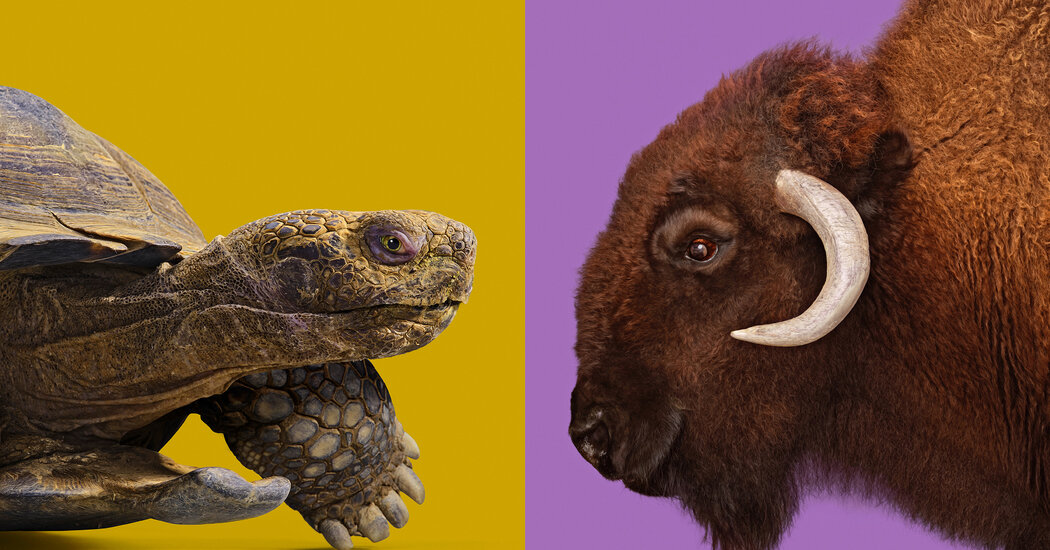What makes a desert tortoise happy? Before you answer, we should be more specific: We’re talking about a Sonoran desert tortoise, one of a few species of drab, stocky tortoises native to North America’s most arid landscapes. Adapted to the rocky crevices that striate the hills from western Arizona to northern Mexico, this long-lived reptile impassively plods its range, browsing wildflowers, scrub grasses and cactus paddles during the hours when it’s not sheltering from the brutal heat or bitter cold. Sonoran desert tortoises evolved to thrive in an environment so different from what humans find comfortable that we can rarely hope to encounter one during our necessarily short forays — under brimmed hats and layers of sunblock, carrying liters of water and guided by GPS — into their native habitat.
Listen to this article, read by Gabra Zackman
This past November, in a large, carpeted banquet room on the University of Wisconsin’s River Falls campus, hundreds of undergraduate, graduate and veterinary students silently considered the lived experience of a Sonoran desert tortoise. Perhaps nine in 10 of the participants were women, reflecting the current demographics of students drawn to veterinary medicine and other animal-related fields. From 23 universities in the United States and Canada, and one in the Netherlands, they had traveled here to compete in an unusual test of empathy with a wide range of creatures: the Animal Welfare Assessment Contest.
That morning in the banquet room, the academics and experts who organize the contest (under the sponsorship of the American Veterinary Medical Association, the nation’s primary professional society for vets) laid out three different fictional scenarios, each one involving a binary choice: Which animals are better off? One scenario involved groups of laying hens in two different facilities, a family farm versus a more corporate affair. Another involved bison being raised for meat, some in a smaller, more managed operation and others ranging more widely with less hands-on human contact.
Then there were the tortoises. On screens along the room’s outer edge, a series of projected slides laid out two different settings: one, a desert museum exhibiting seven Sonoran specimens together in a large, naturalistically barren outdoor enclosure; the other, a suburban zoo housing a group of four tortoises, segregated by sex, in small indoor and outdoor pens furnished with a variety of tortoise toys and enticements. Into the slides had been packed an exhausting array of detail about the care provided for the tortoises in each facility. Only contestants who had prepared thoroughly for the competition — by researching the nutritional, environmental, social and medical needs of the species in question — would be able to determine which was doing a better job.
“Animal welfare” is sometimes misused as a synonym for “animal rights,” but in practice the two worldviews can sometimes be at cross purposes. From an animal rights perspective, nearly every human use of animals is morally suspect, but animal-welfare thinkers take it as a given that animals of all kinds do exist in human care, for better or worse, and focus on how to treat them as well as possible. In the past half century, an interdisciplinary group of academics, working across veterinary medicine and other animal-focused fields, have been trying to codify what we know about animal care in a body of research referred to as “animal-welfare science.”
